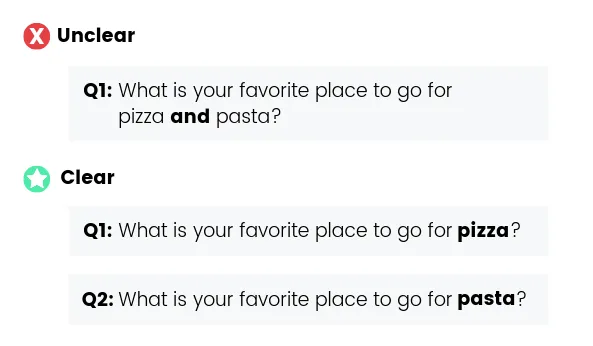How to Write Good Survey Questions
When you have a question about your business, which new product to offer, what new features and services to add, and where to open your next location there's only one obvious way to find out a survey. You put together questions, ask your followers and customers, and you know what to do next.
Surveys seem so simple, but they are not in real life. Slightly vary the types of questions and response options in your survey, and you can seriously impact the quality and value of your survey’s results
Tips to write good survey questions.
Keep It Short
Long surveys are sometimes very boring and people avoid them. So when writing a survey keep in mind to keep it short and ask what is important. Do not be greedy and ask the questions which you really need to. If there aren’t too many questions, and respondents can immediately understand what is being asked, they are more likely to be willing and able to provide useful information.
Ask Neutral Questions
Putting an opinion in your question prompt or asking a “leading question” can influence respondents to answer in a way that doesn’t reflect how they really feel.
Say you asked the leading question:
“We think our customer service representatives are really awesome. How awesome do you think they are?” The question seems to convey an opinion that you want respondents to agree with. You can make the tone objective by editing it as follows: “How helpful or unhelpful do you find our customer service representatives to be?”
Don't Ask Two Questions At Once
Each question should focus on obtaining a specific piece of information. When you ask two questions at once using “and” or “or,” you’re introducing another question, which may have a different answer. For example:

This will have one of two results: either you’ll confuse your respondents, who are forced to choose the right answer to one question; or your respondents will confuse you with their answers. Either way, make sure you write simple survey questions asking for separate pieces of information as separate questions.
Be Clear, Specific, And Direct
An effective survey, should not be complicated. Avoid using big words, words that are difficult to understand, and words that could have multiple meanings. Your question should be short, simple, and clear. Beginning with basic, easier questions can encourage a respondent to continue. Use plain language to explain concepts or acronyms that customers may be unfamiliar with and offer an opt-out for those who are unsure. Don’t be afraid to use an example to ensure clarity on complex information in your survey- a confused audience leads to frustration and low-quality responses.
Keep A Balanced Set Of Answer Choices
Respondents need a way to provide honest and thoughtful feedback. Otherwise, the credibility of their responses is at risk.
The answer choices you include can be another potential source of bias. Let’s assume we included the following as answer options when asking respondents how helpful or unhelpful your customer service reps are:
- Extremely helpful
- Very helpful
- Helpful
You’ll notice that there isn’t an opportunity for respondents to say that the service isn't helpful. It is important to use respondents' tone while writing survey questions. This means adopting a more balanced set of answer options, like the following:
- Very helpful
- Helpful
- Neither helpful nor unhelpful
- Unhelpful
- Very unhelpful
Give Users An ‘Other’ Option
Make sure that, in a multiple-choice sequence, you’ve given respondents the chance to opt out if the question doesn’t apply to them or if none of their answers fit. Provide an option like “no opinion,” “neutral,” or “none of the above.” You can also offer an option to select “other” and provide an open-ended response that can give you more context
Tags


How We Doing Here